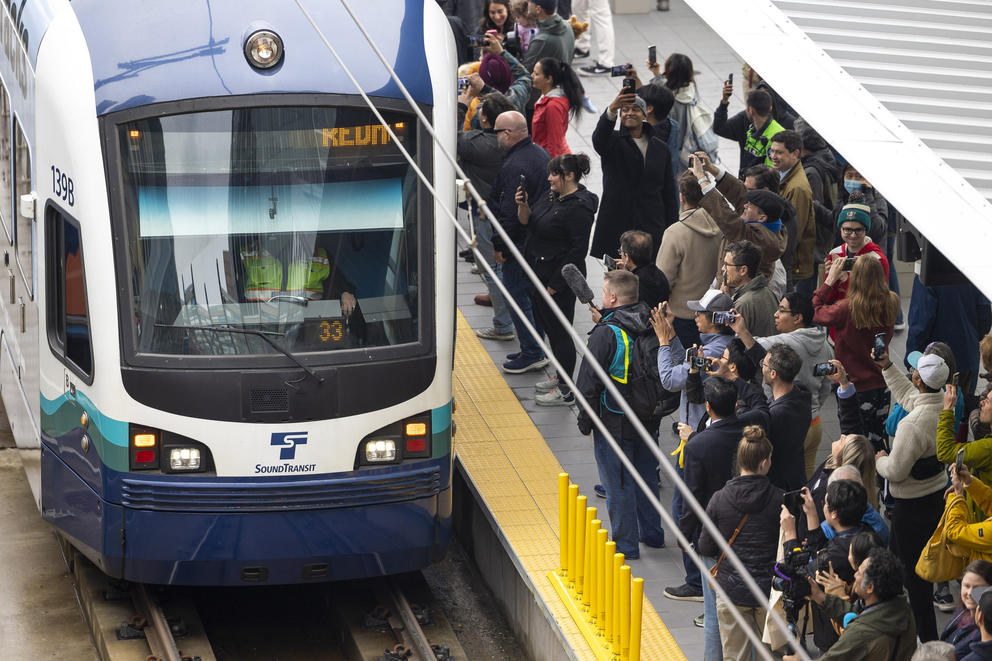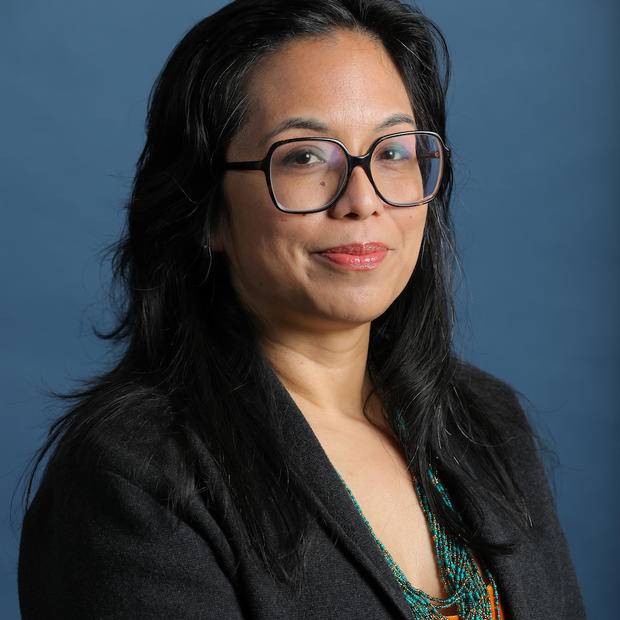The current configuration of what’s called the 2 Line is expected to move about 6,000 riders between Bellevue and Redmond daily on trains with two cars each, according to the agency. That number is expected to rise once the connection to Seattle is completed. Currently, Eastside riders can connect between South Bellevue and Downtown Seattle via bus.
More expansions are coming in the next few years. Light rail connecting Shoreline, Mountlake Terrace and Lynnwood to the existing 1 Line in Seattle is scheduled to open in the fall. Two more Eastside stations – Marymoor Village, next to the popular Marymoor Park, and Downtown Redmond – are anticipated to open next year.
The original plan for East Link was for a mid-2023 opening, but construction delays pushed the opening date back one year. Then, plans to open this year all the way from Seattle to Redmond over the Interstate 90 bridge were derailed when the agency announced last year that the rail line’s I-90 supports had to be redone due to faulty concrete. That connection, which will include stations at Judkins Park and Mercer Island, is expected to open in 2025 at the same time as the Redmond stations.
King County Councilmember and Sound Transit board member Claudia Balducci said the agency opted to get use out of the completed stations, and perhaps give people who had never taken light rail the chance to experience it.
“Option 1 was to mothball the stations and pay for security for a year. Option 2 was to open it to the public and get some use out of it,” said Balducci, who pushed for the East Link partial opening.
From left, former Sound Transit CEO Joni Earl (seated); Bellevue Mayor Lynne Robinson; U.S. Sen. Maria Cantwell; Microsoft Vice Chair and President Brad Smith; U.S. Sen. Patty Murray; King County Executive Dow Constantine; King County Councilmember Claudia Balducci (holding scissors); Gov. Jay Inslee; Redmond Mayor Angela Birney; and Lynnwood Mayor Christine Frizzell at the ribbon-cutting ceremony for the opening of Sound Transit’s 2 Line light-rail service. (Jason Redmond for Cascade PBS)
Balducci also pointed out that the 1 Line between Tukwila and Seattle originally opened only between Tukwila International Boulevard and Westlake Station, with extensions to the south and north following in the decade afterward.
Balducci, who has been working on the East Link extension since she was a Bellevue City Councilmember in the late 2000s, said she was delighted to see the trains start moving.
“I’ve been working on this for almost two decades. All this work is finally turning into service,” she told Cascade PBS a few days before the official opening of the line.
Redmond Mayor Angela Birney said ever since the locations of the stations were identified, the city has approved multifamily housing and other amenities nearby to capitalize on the transit option.
“We put a lot of housing right around our stations and many of those families … would rather not use their cars. That’s intentionally that they moved to those areas. So I’m really excited for them to actually be able to get on the train and leave their cars behind,” Birney said.
The city also added two bike/pedestrian bridges for the Redmond stations.
“And so we’re really making another option for people to ride, bike, get on the train and get through the Eastside,” Birney said.
Hundreds of people attended the ribbon-cutting Saturday at the Downtown Bellevue station, despite the gray skies and cold rain, although many more boarded at other stations just to ride the rails. Royal-blue balloons and booths lined the station adjacent to the Bellevue Transit Center on Northeast Sixth Street near Meydenbauer Center, with local booths lined up as well as food trucks from local businesses.
Redmond resident Gary Fujioka boarded the train with his electric bike at the Redmond Technology Station on opening day and rode it south to celebrate.
“It’s busier than I thought it would be, but that’s a good thing. I’m surprised by the turnout; I hope all these people return and use it regularly,” Fujioka said. “Everybody should be open-minded to our public transportation in the region and I invite them to come out and try it, it’s much nicer than you think it is.”
Sound Transit says the trip between Redmond Technology Center near Microsoft and Bellevue Downtown should take about 10 minutes. The trains come by each station every 10 minutes seven days a week, from 5:30 a.m. to 9:30 p.m.
On Saturday public officials from Bellevue, Redmond and King County were in attendance alongside Gov. Jay Inslee and both U.S. Senators Maria Cantwell and Patty Murray. Representatives from Microsoft and Amazon, which have built up their workforces on the Eastside over the past decades, also attended.
Attendees of all ages – from small children wearing Thomas the Tank Engine train conductor hats to groups of the elderly – came to the Bellevue downtown station to celebrate. Many took photos and videos to commemorate the opening of the line that took two decades to complete. Although it’s not yet connected to other regions around Puget Sound, people traveled from Mercer Island or Seattle and even as far as Vancouver, B.C., to experience the moment.
People crowded each station entrance to watch the ribbon-cutting and cheered all the way down the tracks as two trains pulled in. Riders were excited as they filled cars, many with no specific destination in mind.
Most riders were taking the train to enjoy the journey, or to stop at each station and look at the artwork, only to hop on the next train and repeat the process across the eight stations.
Jenny Pai and her family drove down from Bothell for the event. Her family wanted to take the line for an adventure. Pai said that if more lines open, she’d be open to taking the train to work.
Like Pai, retiree Sand Stron from Mercer Island came for the opening day just to travel south to north and vice versa to his parking spot in the South Bellevue parking garage.
“I think this is an important thing for our region and we’re looking forward to it coming from Mercer Island. We’ll probably use the transit a lot.”
University of Washington student Yoshi Takeno came with a group of 25 from the university chapter of the Institute of Transportation Engineers, a group passionate about improving transportation in the state. Takeno said attendees from Oregon State University also came for the opening day. The groups were going up and down the line, stopping at each station to explore.
“There’s been construction delays and I think that’s frustrating, but I’m glad they were able to open this segment. I think they wanted to be able to show voters that their tax dollars are going to something that’s positive and show the benefits of the light rail,” Takeno said.
He hopes that people will continue to use it regularly, but worries that they’ll still opt to drive instead due to the abundance of parking in Bellevue.
“But that doesn’t necessarily mean it’s a failure, it’s a product of past policies and it’ll require additional new development and as they finish the line to Seattle; I think ridership can increase,” Takeno said.
CORRECTION: This story misspelled Yoshi Takeno's name and said incorrectly said students from the University of Oregon attended the event, instead of students from Oregon State University. This story has been updated to show the correct spelling and university name.













